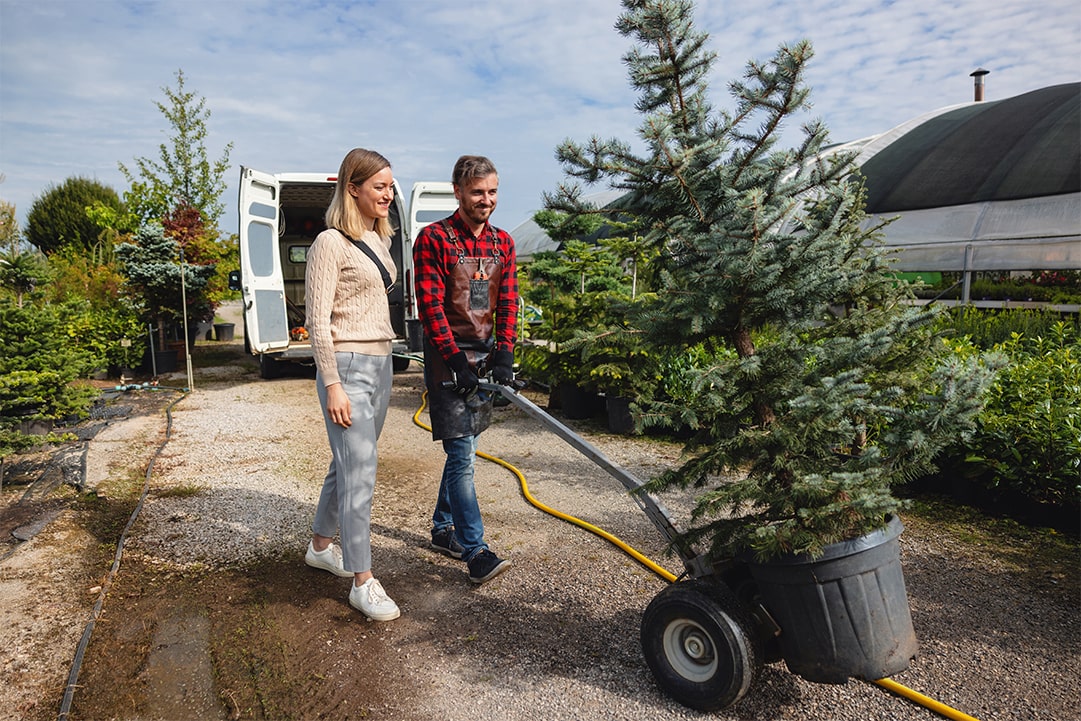Trees are nature’s solution to many environmental, economic, and social challenges we face today. However, not all tree-planting efforts yield the desired benefits.
This is where the concept of strategic tree planting comes into play, a thoughtful approach to planting trees that maximizes their benefits for the environment, economy, and society.
Strategic tree planting involves selecting the right species, considering the local ecosystem, and planning for long-term growth and sustainability.
In this article, you will learn:
- The environmental, economic, and social benefits of strategic tree planting.
- How to implement strategic tree planting, from selecting the right trees to ensuring their long-term growth and care.
- The future of strategic tree planting and its potential to transform urban and rural landscapes.
As we delve into the intricacies of strategic tree planting, we’ll uncover how this practice not only beautifies our surroundings but also contributes to a healthier planet. Let’s explore the profound impact that well-planned tree planting can have on our world.
Key Benefits of Strategic Tree Planting
Strategic tree planting offers a myriad of benefits that span the environmental, economic, and social spheres, making it an essential practice for sustainable development.
Environmental Benefits
Air Quality Improvement and Carbon Sequestration
Trees are natural air purifiers. Through the process of photosynthesis, they absorb carbon dioxide—a primary greenhouse gas—and other pollutants, then release oxygen back into the atmosphere. Strategic planting of trees in urban areas can significantly reduce pollution levels, contributing to cleaner air and mitigating the effects of climate change through carbon sequestration.
Erosion Control and Water Conservation
Trees play a crucial role in stabilizing soil and preventing erosion with their root systems. They also contribute to water conservation by capturing rainwater, reducing runoff, and allowing water to percolate into the soil. This not only conserves water but also protects waterways from pollution carried by urban runoff.
Economic Benefits
Enhanced Property Values and Reduced Energy Costs
Strategically placed trees can increase property values by as much as 20%. They add aesthetic appeal and offer shade, which can significantly reduce energy costs for cooling in the summer months. The presence of healthy trees in neighborhoods is often associated with higher property values and desirability.
Contribution to Local Economies Through Green Spaces
Green spaces with abundant tree coverage attract tourists and promote local businesses. Parks and recreational areas that are well-landscaped with trees create inviting spaces for community events, further contributing to the vibrancy and economic health of local communities.
Social and Health Benefits
Improvement in Physical and Mental Health
Exposure to green spaces, including areas with significant tree coverage, has been linked to reductions in stress, improved mood, and lower obesity rates. Trees and green spaces encourage outdoor activities, which are beneficial for physical health, and provide serene environments that support mental well-being.
Community Engagement and Recreational Spaces
Trees and green spaces serve as communal hubs for activities, fostering social connections and community engagement. They offer recreational areas for families, enhance neighborhood aesthetics, and provide spaces for people to connect with nature and each other.
Implementing Strategic Tree Planting
To realize the benefits of strategic tree planting, it’s crucial to approach the process with careful planning and consideration.
Selecting the Right Trees
Importance of Choosing Appropriate Species for Different Environments
The success of tree planting initiatives greatly depends on selecting species that are well-suited to the local climate, soil, and environmental conditions. Drought-tolerant species, for example, are essential in arid regions, while other areas may require species that can thrive in wet conditions.
Considerations for Drought Tolerance, Sun Exposure, and Seasonal Characteristics
Choosing trees that match the specific conditions of their planting sites ensures their survival and growth. Considerations should include drought tolerance, required sun exposure, and adaptability to seasonal changes. This ensures that trees not only survive but thrive, providing benefits for decades to come.
Care and Maintenance for Tree Growth
Pruning, Mulching, and Protection from Pests
Proper care and maintenance are critical for the health and growth of trees. Regular pruning helps maintain their shape and promotes healthy growth. Mulching conserves moisture, suppresses weeds, and provides necessary nutrients. Additionally, protecting trees from pests and diseases is crucial for their long-term survival.
Monitoring Growth and Health Assessments
Regular monitoring and health assessments allow for early detection of potential issues, ensuring that trees remain a beneficial asset to the environment and community. This proactive approach to tree care ensures that any problems are addressed promptly, maintaining the health and vitality of the tree population.
Long-Term Planning and Challenges
Effective tree-planting initiatives require foresight and preparation to address the challenges that may arise. Long-term planning ensures the sustainability and success of tree-planting efforts.
Developing a Tree Planting Strategy
Aims, Objectives, and Vision for Sustainable Urban Forests
A comprehensive tree-planting strategy outlines clear aims, objectives, and a vision for the development of sustainable urban forests. This includes identifying suitable areas for planting, setting targets for canopy coverage, and ensuring diversity in the species planted to create resilient ecosystems.
Opportunity Mapping and Prioritization of Planting Areas
Utilizing GIS (Geographic Information Systems) and other mapping tools can help identify priority areas for tree planting, such as urban heat islands, areas with low canopy coverage, or regions prone to erosion. By prioritizing these areas, strategic tree planting can address specific environmental challenges and maximize the benefits for communities.
Addressing Challenges in Tree Planting Initiatives
Overcoming Common Obstacles: Climate Change, Pest/Disease Management
Climate change poses significant challenges to tree planting, including increased vulnerability to pests and diseases and the need for species that can adapt to changing conditions. Proactive management and selection of resilient tree species are crucial for overcoming these obstacles.
The Importance of Community Involvement and Policy Support
Successful tree-planting initiatives require support from the community and local governments. Engaging the community through educational programs and volunteer opportunities can foster stewardship and ensure the longevity of planting efforts. Similarly, policy support, including funding and regulations that protect and promote urban forests, is essential for the success of strategic tree planting.
FAQs
To further elucidate the concept of strategic tree planting, here are answers to some frequently asked questions:
What is strategic tree planting?
Strategic tree planting involves carefully planning and executing tree-planting efforts with the goal of maximizing environmental, economic, and social benefits. It considers factors such as species selection, location, and long-term care and maintenance.
How do trees benefit urban areas economically?
Trees enhance property values, reduce energy costs by providing shade, and contribute to local economies by creating attractive green spaces that support businesses and tourism.
What are the best practices for tree care and maintenance?
Best practices include selecting the right species for the location, proper planting techniques, regular watering, mulching, pruning, and monitoring for pests and diseases to ensure healthy growth.
How can communities get involved in tree-planting initiatives?
Communities can get involved through volunteer planting events, educational programs, and by advocating for local policies that support urban forestry efforts.
Conclusion: The Future of Strategic Tree Planting
The Rewards of Strategic Tree Planting
Strategic tree planting holds the transformative potential to address environmental challenges, enhance economic value, and improve social well-being. The long-term benefits of well-planned tree planting efforts are immense, ranging from mitigating climate change effects to fostering healthier, more connected communities.
Encouraging action and continued research into sustainable practices is essential for the future of strategic tree planting. As we move forward, it is crucial to adapt and refine our approaches to meet the evolving needs of our planet and its inhabitants.




